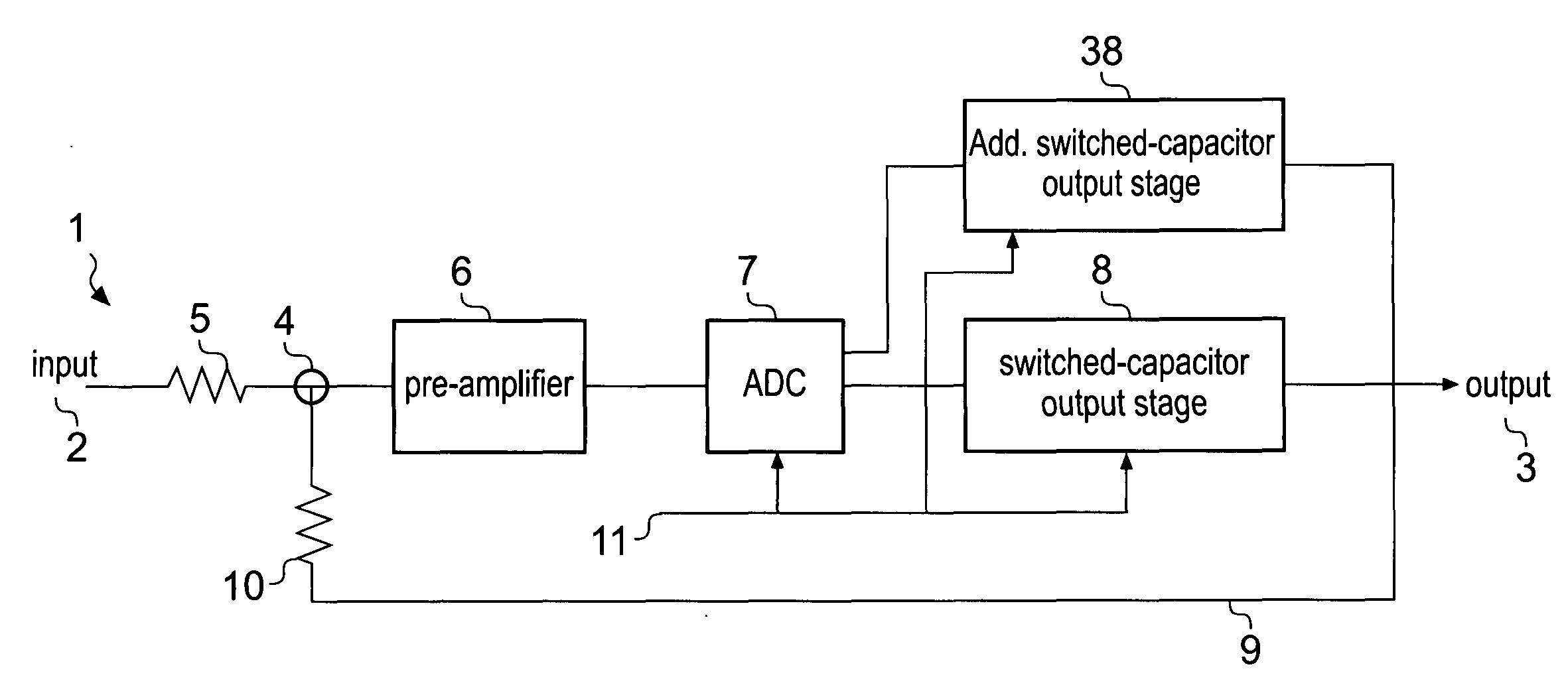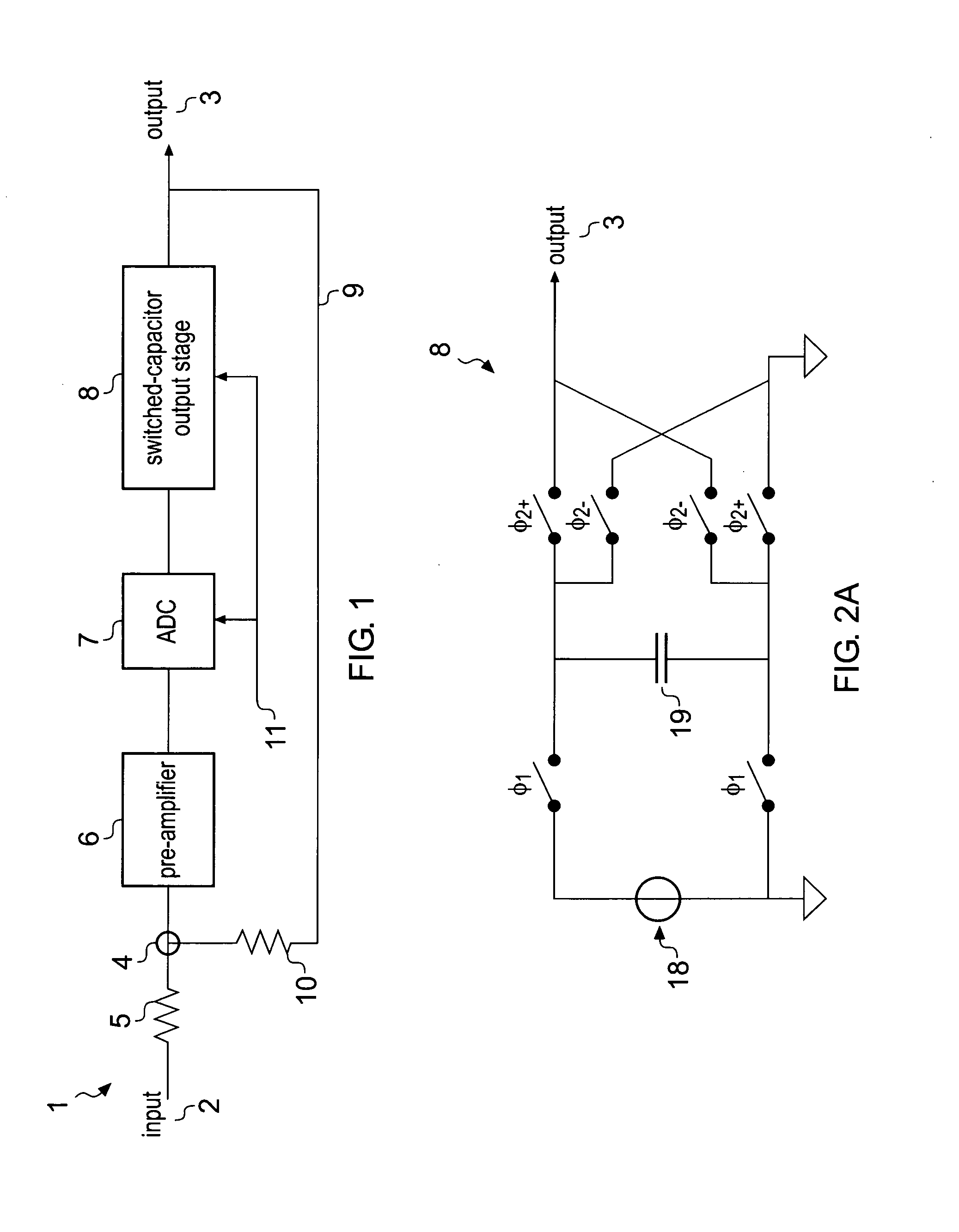Circuit for an Amplifier
a circuit and amplifier technology, applied in the field of circuits for amplifiers, can solve the problems of f typically having relatively large physical dimensions, unable to be integrated into a microchip, and damage to the speaker, and achieve the effect of minimising the player
- Summary
- Abstract
- Description
- Claims
- Application Information
AI Technical Summary
Benefits of technology
Problems solved by technology
Method used
Image
Examples
Embodiment Construction
[0010]According to a first aspect, there is provided a circuit comprising:
[0011]an input for receiving an analogue input signal;
[0012]an analogue-to-digital conversion stage operable to convert the analogue input signal into a digital signal comprising a plurality of symbols each having one of a plurality of different values; and
[0013]a first output stage coupled to receive the digital signal from the analogue-to-digital conversion stage, the first output stage comprising a first energy storage element and being operable to discharge the first energy storage element to produce first charge pulses in an output signal, the polarity of the first charge pulses depending upon values of the symbols received from the analogue-to-digital conversion stage.
[0014]According to a second aspect, there is provided a method comprising:
[0015]receiving an analogue input signal;
[0016]converting the analogue input signal to a digital signal comprising a plurality of symbols each having one of a plurali...
PUM
 Login to View More
Login to View More Abstract
Description
Claims
Application Information
 Login to View More
Login to View More - R&D
- Intellectual Property
- Life Sciences
- Materials
- Tech Scout
- Unparalleled Data Quality
- Higher Quality Content
- 60% Fewer Hallucinations
Browse by: Latest US Patents, China's latest patents, Technical Efficacy Thesaurus, Application Domain, Technology Topic, Popular Technical Reports.
© 2025 PatSnap. All rights reserved.Legal|Privacy policy|Modern Slavery Act Transparency Statement|Sitemap|About US| Contact US: help@patsnap.com



